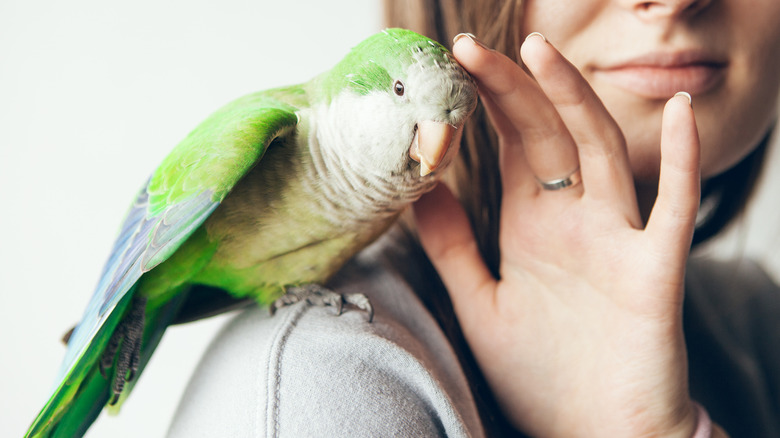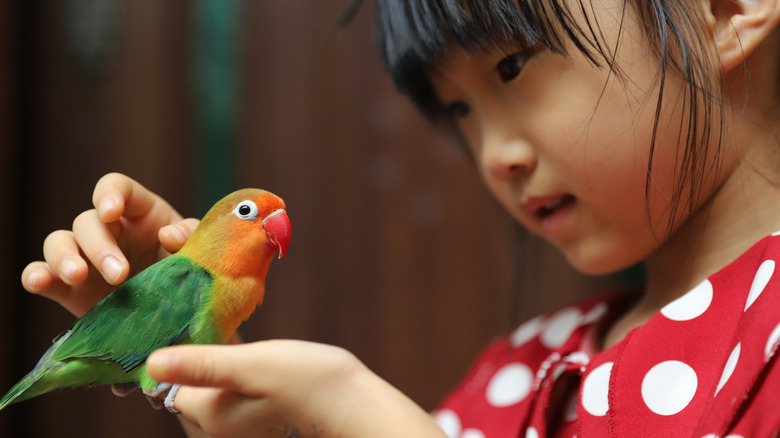The One Place You Should Never, Ever Stroke A Pet Bird Around Its Head
A small, feathered friend can bring a lot of joy to its owner with its compassion and little chirps and coos, offset by a big personality. Interacting physically with birds, however, follows different rules than approaching a dog or petting a cat. Notably, while a scratch under the neck might cause a dog's leg to thump in excitement or a cat to purr, this can send unintended signals to a bird.
Many bird species have their sexual organs on their back and under their wings, making the neck a sensitive area that can trigger mating signals. When this sends mixed messages, a scorned lover may act out, and it's common for rejected birds to exhibit behaviors such as feather plucking, regurgitating food, and becoming excessively vocal; an owner should consult a veterinarian if any of these behaviors occur. What's more concerning is the risk of aggressive behavior towards the owner, which can turn a loving bond into a tense situation between the pet and caretaker.
All animals have different reactions to human interaction; for example, a cat might respond to petting with a lick or by scratching. While there are always exceptions to general rules of showing affection based on individual personalities, when it comes to birds, it's best not to stroke under their neck and instead show affection in other ways.
The best way to approach and handle a pet bird
Before attempting to pet a bird, it is essential to earn its trust by spending plenty of time nearby, avoiding sudden movements or loud noises, and beginning by feeding it by hand and letting it come to you. Once trust is established, if the feathered friend is open to being petted, it is best to stroke only the head, cheeks, beak, and feet. Besides the neck, the belly, back, and wings can also convey a desire to mate as a signal of attraction. If the bird retracts from a single finger pet to its head, they might not be ready or interested in physical touch.
A feathered friend can be the perfect companion, whether you're looking for a quiet pet bird to admire or a vocal parrot to converse with. Similarly, not all birds want to be touched or held; different personalities and species make birds beloved and fascinating pets. All bird owners can find ways to bond with their chirpy companions, whether it's as a tiny shadow interested in everything they do or as an adorable goofball who loves to play, as every friendship is unique. Still, to make the most of a special connection with a bird, stick to petting methods that avoid sending mixed signals.

